Is it possible to control high current with small rms voltage?
UPDATE
Do you think that this is gonna work?

Is it possible to control high current with small rms voltage?
UPDATE
Do you think that this is gonna work?

First a word of warning: Please respect the 110V mains supply, it can be lethal.
Dimming of a lightbulb works like: Dimmer to bulb control
The below two links describe a method with a zero crossing circuit and a triac to control a lightbulb from Arduino (or most any microcontroller). The controller is synchronized to the mains supply by a zero crossing detector and in turn fires the triac at sooner or later, resulting in dimming the lightbulb.
Here is a project that explains a project to make just that with an Arduino. http://www.instructables.com/id/Arduino-controlled-light-dimmer-The-circuit/step2/Arduino-controlled-light-dimmer-The-software/
Luckily this hardware is also readily built available, here is an example: http://www.inmojo.com/store/inmojo-market/item/digital-ac-dimmer-module/
You can control a solid-state relay with a microcontroller output. And if you need more current than that, the solid-state relay can control a bigger non-solid-state relay.
Be careful if you really don't know what you are doing, you can hurt or kill someone with 110 VAC.
Ya use a interfacing circuit between the low voltage circuit and high voltage circuit. Interfacing may contain an isolator and some transistor or darlington pair( if you want to increase current )